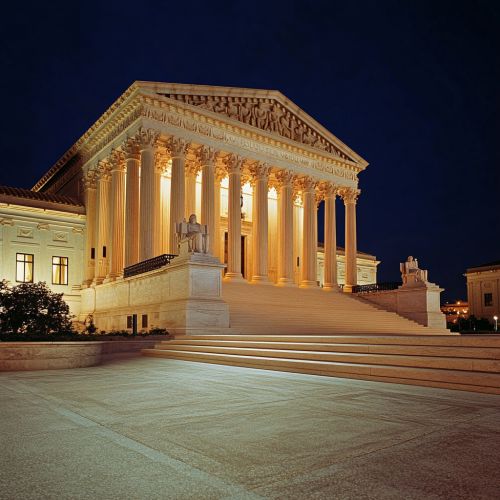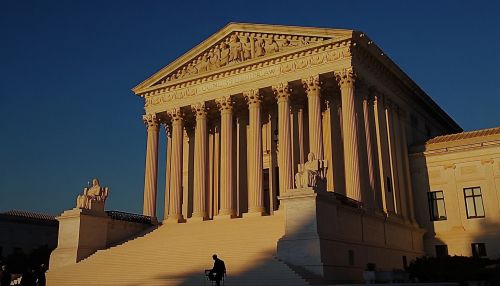Miller v. California
Background and Context


The case of Miller v. California is a landmark decision by the Supreme Court of the United States that established the test for determining what constitutes obscenity, which is not protected by the First Amendment. The decision, rendered in 1973, arose from the distribution of unsolicited pornographic material by Marvin Miller, who was convicted under California's obscenity laws. This case is pivotal in the realm of constitutional law and freedom of speech, as it refined the standards set by previous cases such as Roth v. United States and Memoirs v. Massachusetts.
Case Details
Facts of the Case
Marvin Miller was the operator of a mail-order business dealing in pornographic films and books. In 1971, he conducted a mass mailing campaign to advertise the sale of illustrated adult material. This campaign included unsolicited brochures sent to individuals who had not requested such material. The brochures contained explicit sexual imagery and descriptions, which led to complaints from recipients. Consequently, Miller was charged under California Penal Code 311.2(a), which prohibited the distribution of obscene materials.
Legal Proceedings
The case was initially tried in the Superior Court of Orange County, California, where Miller was convicted. He appealed the conviction, arguing that the statute under which he was charged violated his First Amendment rights. The California Court of Appeal upheld the conviction, and Miller subsequently petitioned the United States Supreme Court for certiorari, which was granted.
Supreme Court Decision
Majority Opinion
The Supreme Court, in a 5-4 decision, upheld Miller's conviction and established a new test for obscenity, known as the "Miller test." The majority opinion, written by Chief Justice Warren E. Burger, articulated that material is considered obscene if:
1. The average person, applying contemporary community standards, would find that the work, taken as a whole, appeals to the prurient interest. 2. The work depicts or describes, in a patently offensive way, sexual conduct specifically defined by applicable state law. 3. The work, taken as a whole, lacks serious literary, artistic, political, or scientific value.
This decision marked a shift from the previous "utterly without redeeming social value" test established in Memoirs v. Massachusetts.
Dissenting Opinions
Justices William O. Douglas, William J. Brennan Jr., Potter Stewart, and Thurgood Marshall dissented. Justice Brennan, who had previously authored opinions expanding First Amendment protections, argued that the new test was too vague and subjective, potentially leading to arbitrary enforcement. Justice Douglas, in his dissent, maintained that the First Amendment does not allow for any form of censorship, including obscenity.
Implications and Impact
Legal and Cultural Impact
The Miller decision had significant implications for both legal standards and cultural norms. It granted states more leeway in defining and regulating obscene material, leading to a patchwork of obscenity laws across the United States. This decision also influenced the production and distribution of adult content, as producers had to navigate varying community standards.
Criticism and Controversy
The Miller test has been criticized for its reliance on "community standards," which can vary widely between different regions, leading to inconsistent applications of obscenity laws. Critics argue that this subjectivity undermines the uniformity of legal protections under the First Amendment. Additionally, the requirement for material to have "serious value" has been debated, with some asserting that it imposes a moralistic standard on artistic expression.
Subsequent Developments
Legal Challenges and Interpretations
Since Miller, numerous cases have tested the boundaries of the obscenity standard. Notable cases include Pope v. Illinois, which clarified the "serious value" prong of the Miller test by establishing that it should be judged by a reasonable person standard, rather than community standards.
Technological Advances and Obscenity
The advent of the internet and digital media has further complicated the application of the Miller test. The global nature of online content challenges the notion of local community standards, prompting ongoing legal debates about how to regulate obscenity in the digital age.
Conclusion
Miller v. California remains a cornerstone case in the jurisprudence of free speech and obscenity law. Its legacy continues to influence legal interpretations and societal attitudes towards explicit content. While the decision provided a framework for evaluating obscenity, it also highlighted the complexities and challenges inherent in balancing freedom of expression with societal norms.
